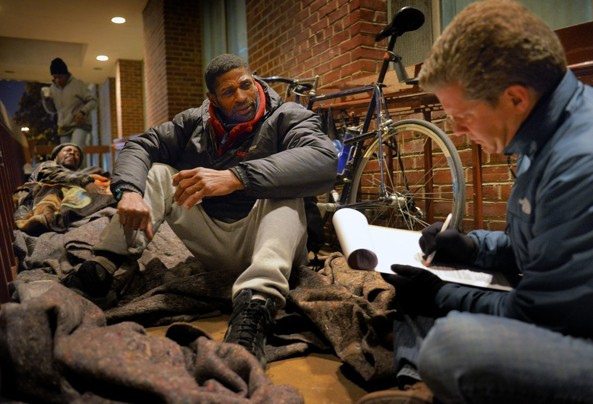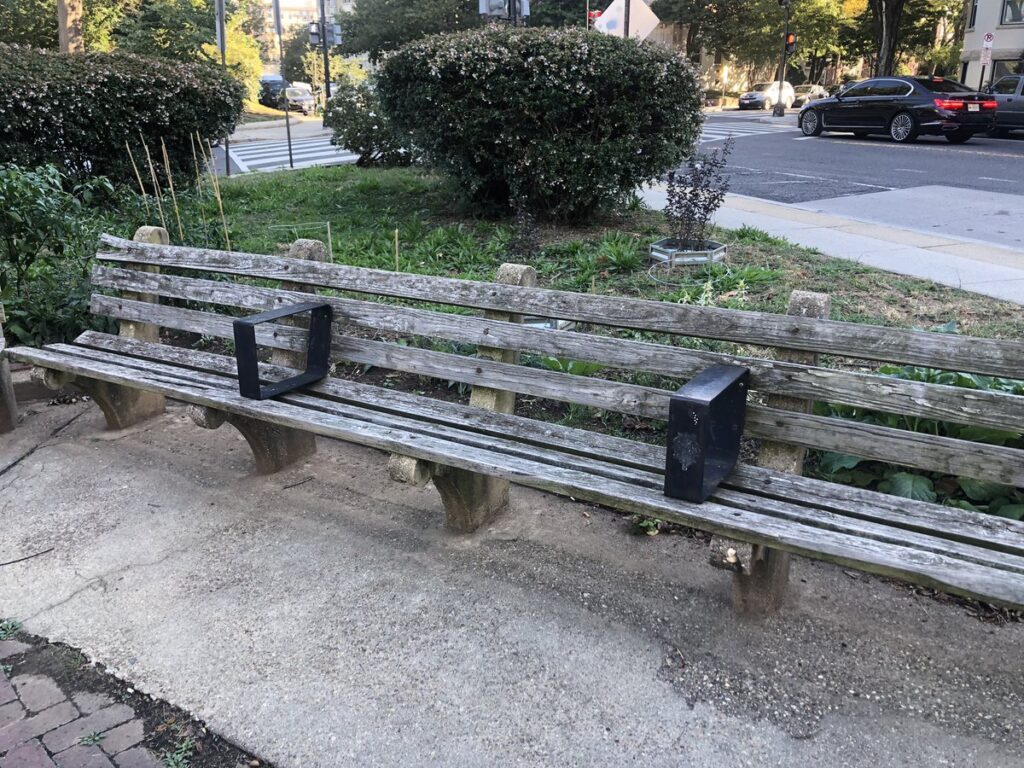The frigid night of Jan. 31 found Eric Sheptock and Patricia Gaston patrolling a 12-block grid in downtown Washington, looking under bushes, glancing behind walls, and peering into stairwells. They were searching for the homeless.
“You’d be surprised where you’ll find some people,” said Sheptock, pulling his head out of an industrial dumpster. “You have to look in any spot where someone could hunker down.”
Roughly 200 other volunteers were replicating the search that night throughout the metro area as part of the District’s annual Point-in-Time homeless count. The count is part of an effort organized by the Community Partnership for the Prevention of Homelessness (CPPH) to discover the number of homeless persons residing in D.C.
The annual count collects ground-level data on the numbers and makeup of the District’s homeless community, providing vital information to service providers and federal agencies that fund and oversee homeless and housing programs in jurisdictions nationwide.
“Its the go-to source of information for what homelessness is like on a given day in the District,” said Tom Fredericksen, Senior Policy Analyst for CPPH.
“This count is about making sure we have the best possible information about where the homeless are, who they are and how many there are,” added the Secretary of Housing and Urban Development, Shaun Donovan. “That more than anything has been an absolutely central part to our ability to make progress.”
The street count is one aspect of a multi-pronged approach that includes shelter counts and reports from service providers, distribution centers and meal programs throughout the city. The entire count is held within a 24-hour period, a “blitz” approach meant to decrease the likelihood of counting individuals more than once.
Volunteers gathered at National City Christian Church at 9 p.m., where they organized into groups before setting out to predetermined areas of the city.
The search can be difficult, and can actually become more so after a homeless individual is found. Sheptock, volunteering in his third count, admitted the inherent awkwardness of approaching and questioning individuals on the street, many of whom must be awakened to be interviewed.
“These people are out here minding their own business, they’re not really into being bothered by strangers,” said the local homeless advocate who lives in a shelter himself.
“Its tough,” agreed Gaston, a contract editor with the Washington Post taking part in her first count. “These people don’t always want to be disturbed.”
Like all other volunteers, Sheptock and Gaston attended a mandatory training session the week before the count where they received instruction on how to conduct surveys under such difficult circumstances.
“We train people to make it as conversational as possible,” explained Fredericksen. “We try to avoid them just ticking through the questions one-by-one.”
The count is part of a larger nationwide project engineered by the Department of Housing and Urban Development (HUD). HUD conducts the count on local levels through Continuums of Care (CoC’s), community service organizations that receive competitive funding from HUD. As a stipulation for receiving funding, CoC’s must agree to participate in bi-annual Point-in-Time counts.
As the District’s CoC, CPPH’s is tasked with organizing the local count.
Though federal mandates require a street-level search only once every two years, CPPH conducts one every January.
“[The count is] useful as a project beyond what HUD is requiring,” says Fredericksen. “We get a lot of information that goes into problematic planning. It just makes sense to do it every year.”
Findings from the 2012 Point-in-Time homeless suggest homelessness is slowly declining on national scale. HUD’s annual report on the count’s results, released this past December, estimated that roughly 633,000 individuals were homeless in the U.S. on a single night in January, a six percent decrease since 2007.
Yet CPPH’s local results suggest homelessness is trending in the opposite direction in the District. Their 2011 count found 6,546 literally homeless (those living without shelter or in emergency or transitional housing) in the metro area, up from 6,044 in 2008.
Sheptock and Gaston concluded their search at about midnight, having counted three people in three hours. For some, such minimal results may not seem to warrant the time wandering through dark alleys in the freezing cold, but Gaston insisted the effort was worth it.
“I’m at a point in my life where I think its really important to help other people,” she said, adding that a few hours of discomfort provided her a brief insight into the lives of those she was counting. “This is only four hours of my life. The people living out here spend every night like this.”








